
Mammals Around Las Vegas, Wildlife Around Las Vegas
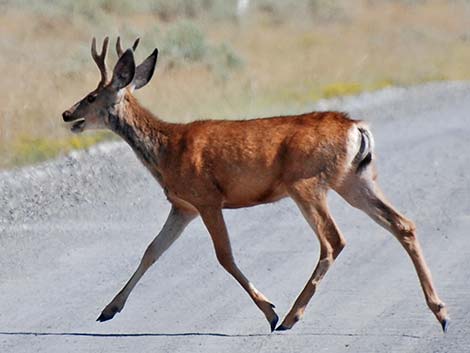 Male mule deer during summer (red) |
General Information: Mule Deer (Odocoileus hemionus) are the deer of the western mountains. Around Las Vegas, they can most easily be seen in the Spring Mountains (Mt. Charleston), but they can be found in all of the higher mountain ranges around southern Nevada from about the Upper Sonoran (Pinyon-Juniper Woodland) life zone up to the Alpine (Alpine Tundra) life zone. Males have antlers, which are shed and regrown every year. Mule deer get their name from their over-sized, mule-like ears. Taxonomy: Order: Artiodactyla (Even-toed Hoofed Mammals); Family: Cervidae (Deer, Elk, Moose, Caribou). There are several regional subspecies. There are 11 subspecies of mule deer. In most cases, the subspecies are difficult to tell apart (except by geography). However, there are obvious differences in the tails of some subspecies: some have black tails, some have white tails, and some have a white tails with a black tip. See examples below. |
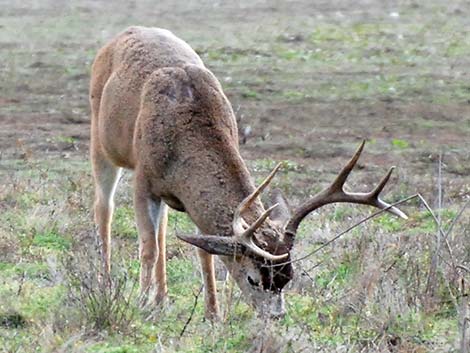 Mule Deer: the antlers split into two equal parts, then each part splits again into equal parts |
Technical Description: Height about 3 feet. Antlers (males only) are forked, each fork being equal in size (compare with White-tailed Deer, also photo below). Coat color tends to be reddish in the spring and gray in the winter. The hooves are in pairs; one pair primarily contacts the ground, and another usually remains slightly off the ground behind the first. Breeding: Deer breed in the fall (fall rut) and produce 1-2 young (fawns) in the spring. Diet: Vegetation; browse on shrubs and twigs. |
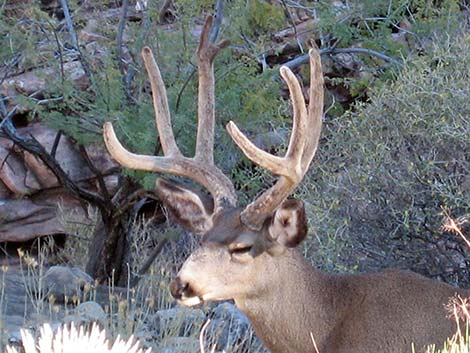 White-tailed Deer: thick beam with tines |
Range: Occur from the Great Plains westward to the Pacific Ocean, from northern Canada to Central Mexico. Comments: White-tailed Deer originally occurred in eastern North America, but they have been widely introduced in the west for hunting. The antlers of white-tails are different from those of mule deer: the antlers form a thick beam with a number of tines that stick up from the beam. On road signs warning of deer, the animal pictured is a white-tailed deer -- one would think that we could use a western deer out here! |
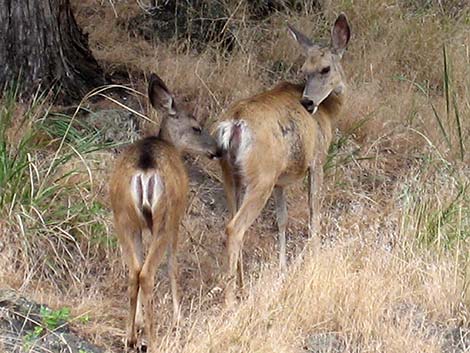 |
Rocky Mountain Mule Deer (Odocoileus hemionus hemionus). In this widespread subspecies (Nevada to Oklahoma and north into Canada, except not the Pacific Coast), the rump is mostly tan, and the tail is white with a black tip. This doe and fawn were photographed in eastern Oregon. |
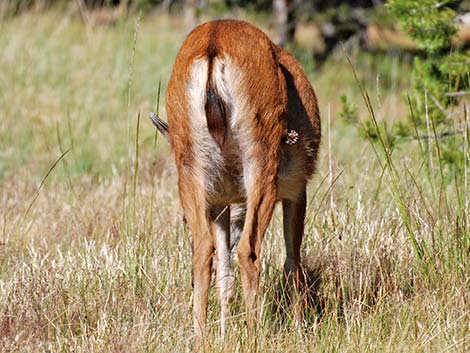 |
California Mule Deer (Odocoileus hemionus californica). In this subspecies (California: Sierra Nevada Mountains and parts of southern California), the rump is mostly tan, and the tail is white with a black stripe down the center and black tip. This doe was photographed in the high country of Yosemite National Park. This reddish color is typical of the summer pelt. |
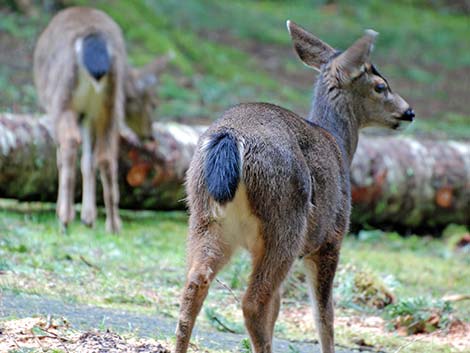 |
Columbian Mule Deer (Odocoileus hemionus columbiana). In this subspecies (coastal California to coastal Alaska), the rump is tan, and the tail is black. These deer were photographed in Silver Falls State Park, western Oregon. These deer used to be considered a separate species, but are actually just Mule Deer. |
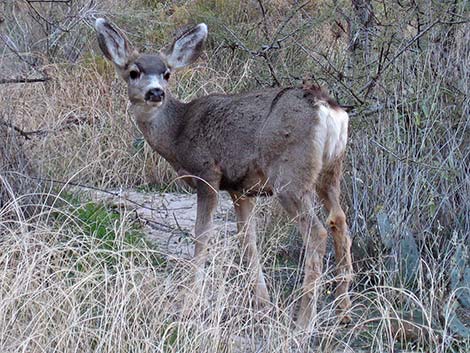 |
Desert Mule Deer (Odocoileus hemionus crooki). In this subspecies (Arizona from the south side of the Grand Canyon (east of the Colorado River) east to west Texas and south into Mexico), the rump and tail are white. This deer was photographed in the bottom of the Grand Canyon. This gray-brown color is typical of the winter pelt. |
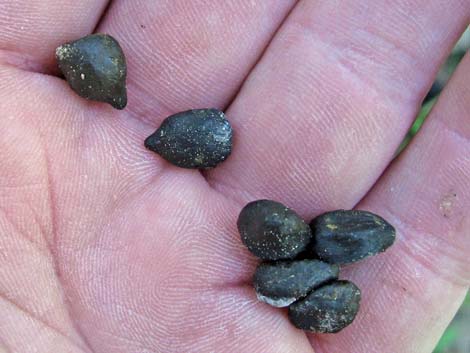 Mule deer scat has a nipple on one end and a dimple on the other |
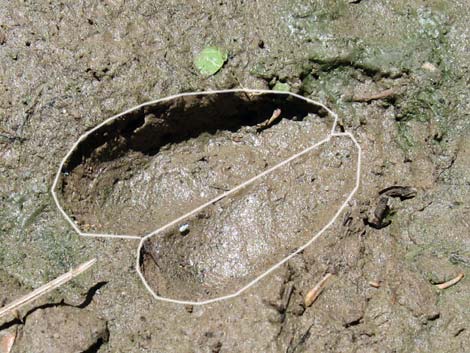 Mule deer track in the mud: heart-shaped with convex sides |
Note: All distances, elevations, and other facts are approximate.
![]() ; Last updated 230920
; Last updated 230920
| Mammals Around Las Vegas | Wildlife Around Las Vegas | Glossary | Copyright, Conditions, Disclaimer | Home |